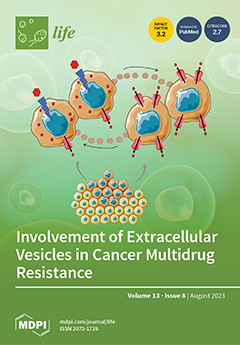Objective: The aim of this investigation was to compare the thickness of the deep local muscles in the neck region, as well as local and widespread sensitivity and functionality, between individuals with migraine and healthy control subjects. Methods: An observational study was carried out in accordance with the STROBE statements. The flexor longus colli and multifidus, two neck-stabilizing muscles, were measured using B-mode ultrasound imaging. The upper trapezius, masseter, temporalis, anterior tibialis, and median nerve all underwent bilateral pressure-pain threshold (PPT) assessments. The statistical program SPSS 29.0 was used to implement the Mann–Whitney U test and Chi-squared test. Spearman Rho was utilized to establish the correlations between the variables. Results: Sixty participants were enrolled in the study. The subjects, who were matched in terms of age, gender, and body mass index (BMI), were equally divided into migraine and control groups. No significant differences between the groups were found in the multifidus CSA regarding both sides at rest (right:
p = 0.625; left:
p = 0.203). However, in contraction, the multifidus CSA showed a significant decrease on the left side in the patients with migraine compared to the controls (
p = 0.032), but no significant differences were found in the right multifidus CSA in contraction between the two groups (
p = 0.270). In comparison to the healthy volunteers, the migraine sufferers showed a substantial reduction in CSA in the longus colli muscle on both the left side (
p = 0.001) and the right side at rest (
p = 0.003), as well as in the CSA of the left longus colli in contraction (
p < 0.001). Furthermore, the migraine patients showed significantly lower PPT compared to the healthy subjects in local and widespread areas bilaterally. All the parameters revealed higher sensitization in the migraine group in the following areas: the right and left temporal regions (
p < 0.001), the right and left upper trapezius (
p < 0.001 and
p < 0.01, respectively), the right and left masseter muscles (
p < 0.01), the right and left median nerves (
p < 0.001 and
p < 0.01, respectively), and the right and left anterior tibialis muscles (
p < 0.001)
. In terms of the craniocervical flexion test (CCFT), the migraine patients demonstrated significantly lower values than the healthy subjects (
p < 0.001). A moderate positive correlation was noted between the PPT in the right temporalis muscle and that in the left longus colli and the right multifidus in contraction. The PPT in the right temporalis muscle also exhibited a positive correlation with the CCFT, although this correlation was low. Between the PPT values, the upper trapezius on both sides showed a moderate positive correlation with the median nerve bilaterally. Conclusions: This research suggests that individuals with migraine may experience local and widespread pain sensitization. A decrease in functionality due to the low muscle endurance of the deep cervical muscles is also accompanied by low values of muscle thickness in contraction. These findings may help to select more accurate treatment approaches for patients with migraine.
Full article
 to open them.
to open them.





